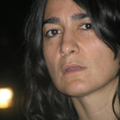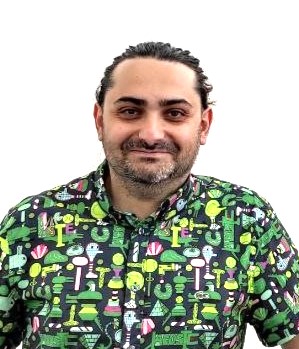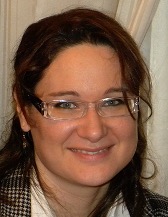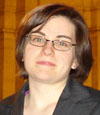Studying at the University of Verona
Here you can find information on the organisational aspects of the Programme, lecture timetables, learning activities and useful contact details for your time at the University, from enrolment to graduation.
Academic calendar
The academic calendar shows the deadlines and scheduled events that are relevant to students, teaching and technical-administrative staff of the University. Public holidays and University closures are also indicated. The academic year normally begins on 1 October each year and ends on 30 September of the following year.
Course calendar
The Academic Calendar sets out the degree programme lecture and exam timetables, as well as the relevant university closure dates..
| Period | From | To |
|---|---|---|
| I semestre | Oct 1, 2020 | Jan 29, 2021 |
| II semestre | Mar 1, 2021 | Jun 11, 2021 |
| Session | From | To |
|---|---|---|
| Sessione invernale d'esame | Feb 1, 2021 | Feb 26, 2021 |
| Sessione estiva d'esame | Jun 14, 2021 | Jul 30, 2021 |
| Sessione autunnale d'esame | Sep 1, 2021 | Sep 30, 2021 |
| Session | From | To |
|---|---|---|
| Sessione Estiva | Jul 19, 2021 | Jul 19, 2021 |
| Sessione Autunnale | Oct 19, 2021 | Oct 19, 2021 |
| Sessione Autunnale Dicembre | Dec 7, 2021 | Dec 7, 2021 |
| Sessione Invernale | Mar 17, 2022 | Mar 17, 2022 |
| Period | From | To |
|---|---|---|
| Festa dell'Immacolata | Dec 8, 2020 | Dec 8, 2020 |
| Vacanze Natalizie | Dec 24, 2020 | Jan 3, 2021 |
| Epifania | Jan 6, 2021 | Jan 6, 2021 |
| Vacanze Pasquali | Apr 2, 2021 | Apr 5, 2021 |
| Santo Patrono | May 21, 2021 | May 21, 2021 |
| Festa della Repubblica | Jun 2, 2021 | Jun 2, 2021 |
Exam calendar
Exam dates and rounds are managed by the relevant Science and Engineering Teaching and Student Services Unit.
To view all the exam sessions available, please use the Exam dashboard on ESSE3.
If you forgot your login details or have problems logging in, please contact the relevant IT HelpDesk, or check the login details recovery web page.
Academic staff
 maurizio.boscaini@univr.it
maurizio.boscaini@univr.it
 alberto.burato@univr.it
alberto.burato@univr.it
 matteo.calgaro_01@univr.it
matteo.calgaro_01@univr.it
 vittoria.cozza@univr.it
vittoria.cozza@univr.it
 mila.dallapreda@univr.it
mila.dallapreda@univr.it
 michele.ginesi@univr.it
michele.ginesi@univr.it
 rosanna.laking@univr.it
rosanna.laking@univr.it
 stefano.spellini@univr.it
stefano.spellini@univr.it
 claudio.tomazzoli@univr.it
claudio.tomazzoli@univr.it
 franco.zivcovich@univr.it
franco.zivcovich@univr.it
Study Plan
The Study Plan includes all modules, teaching and learning activities that each student will need to undertake during their time at the University.
Please select your Study Plan based on your enrollment year.
1° Year
| Modules | Credits | TAF | SSD |
|---|
Computer Architecture
2° Year activated in the A.Y. 2021/2022
| Modules | Credits | TAF | SSD |
|---|
3° Year activated in the A.Y. 2022/2023
| Modules | Credits | TAF | SSD |
|---|
1 module among the following| Modules | Credits | TAF | SSD |
|---|
Computer Architecture
| Modules | Credits | TAF | SSD |
|---|
| Modules | Credits | TAF | SSD |
|---|
1 module among the following| Modules | Credits | TAF | SSD |
|---|
Legend | Type of training activity (TTA)
TAF (Type of Educational Activity) All courses and activities are classified into different types of educational activities, indicated by a letter.
Type D and Type F activities
Le attività formative in ambito D o F comprendono gli insegnamenti impartiti presso l'Università di Verona o periodi di stage/tirocinio professionale.
Nella scelta delle attività di tipo D, gli studenti dovranno tener presente che in sede di approvazione si terrà conto della coerenza delle loro scelte con il progetto formativo del loro piano di studio e dell'adeguatezza delle motivazioni eventualmente fornite.
| years | Modules | TAF | Teacher |
|---|---|---|---|
| 3° | Control theory | D |
Riccardo Muradore
(Coordinator)
|
| 3° | Biomedical Data and Signal Processing | D |
Silvia Francesca Storti
(Coordinator)
|
| 3° | Matlab-Simulink programming | D |
Bogdan Mihai Maris
(Coordinator)
|
| years | Modules | TAF | Teacher |
|---|---|---|---|
| 3° | Introduction to 3D printing | D |
Franco Fummi
(Coordinator)
|
| 3° | Python programming language | D |
Vittoria Cozza
(Coordinator)
|
| 3° | HW components design on FPGA | D |
Franco Fummi
(Coordinator)
|
| 3° | Rapid prototyping on Arduino | D |
Franco Fummi
(Coordinator)
|
| 3° | Protection of intangible assets (SW and invention)between industrial law and copyright | D |
Roberto Giacobazzi
(Coordinator)
|
| years | Modules | TAF | Teacher | |
|---|---|---|---|---|
| 1° | Subject requirements: mathematics | D |
Rossana Capuani
|
|
| 3° | The fashion lab (1 ECTS) | D |
Maria Caterina Baruffi
(Coordinator)
|
|
| 3° | LaTeX Language | D |
Enrico Gregorio
(Coordinator)
|
|
Databases (2022/2023)
Teaching code
4S00037
Credits
12
Language
Italian
Also offered in courses:
- Databases and WEB - Laboratorio of the course Bachelor's degree in Bioinformatics
Scientific Disciplinary Sector (SSD)
ING-INF/05 - INFORMATION PROCESSING SYSTEMS
The teaching is organized as follows:
Teoria
Tecnologie per le basi di dati
Laboratorio
Learning objectives
The course aims to provide the necessary skills for: (i) the design of data according to the requirements with reference to different application contexts and within the production process of software systems; (ii) effective and efficient management and use of data; (iii) the use of a system for the management of relational databases in order to create, manage and query databases; (iv) the development of applications that interact with relational databases. At the end of the course the student must demonstrate knowledge and understanding of data models and query languages that characterize systems for data management and knowledge of the fundamental mechanisms to develop applications that interact with a database; have the ability to apply the acquired knowledge and understanding skills for the design of a data collection in an effective way compared to a set of application requirements, the ability to query and efficiently use the data managed by a system, the ability to design and implement an application that interacts with a data- base; know how to develop the skills necessary to continue the studies independently in the field of data management systems and software solutions development.
Prerequisites and basic notions
Basic knowledge of linear algebra, logic, programming and operating systems (secondary memory and file system)
Program
The program is specified for each module as follows.
--------------------------
Module of Theory
--------------------------
- Introduction to database management systems (DBMS): architectures and functionalities of a DBMS. Physical and logical data independence. Data models. Concepts of model, schema and instance of a database. Languages for database systems. DBMS vs. file system.
- Conceptual database design: conceptual data models. The Entity-Relationship model (ER). Elements of the ER model: entities, attributes, relationships, ISA hierarchies and cardinality constraints.
- Logical database design: logical data models, the relational data model. Elements of the relational data models: relations and integrity constraints. Mapping between conceptual schemas in ER model and logical schema in the relational model.
- Interacting with a database system: languages for the definition, querying and update of a database. The relational algebra. Optimization of algebraic expressions. SQL: select-from-where statement.
---------------------
Module of Lab
---------------------
- Introduction to the relational database management system (RDBMS) PostgreSQL.
- Introduction to the use of SQL in PostgreSQL.
- Query Optimization.
- Introduction to the transaction.
- Introduction to Python Language.
- Database access from applications written in Java/Python.
----------------------------------------------
Module of Database technology
----------------------------------------------
- The internal architecture of a DBMS. Transactions. Transactions properties. The concurrency control: schedules, the two-phase locking. Access methods (indexes): primary and secondary indexes, B-+tree, hashing based access methods. Query execution and optimization.
- Techniques for the interaction between a DBMS and an application: JDBC and ORM.
- Semi-structured data: XML and JSON, MongoDB (hints).
Bibliography
Didactic methods
Theory Module
-------------------------
Teaching delivery methods: face-to-face lectures (also available in recorded streaming; recordings will be made available on request for students unable to attend in person or in streaming), classroom exercises with the teacher, teaching material (slides) and further exercises available on the eLearning platform, reception at the times indicated on the teacher's web page.
Laboratory Module
--------------------------------
Teaching delivery methods: classroom lectures and exercises in the computer lab , didactic material (slides) and further exercises on the eLearning platform, individual reception at the times agreed with the teacher.
Database Technologies Module
---------------------------------------------------------
Teaching methods: lectures, classroom exercises with the teacher, teaching material (slides) and further exercises available on the eLearning platform, reception at the times indicated on the page web site of the teacher.
Learning assessment procedures
The exam is composed of three parts: theory, technologies and lab.
----------------------------------------------------------------
Module of Theory
----------------------------------------------------------------
For the modules of "Teoria" and "Tecnologie per le basi di dati" the exam consists of a written test with a duration of 2.5 hours containing: (i) an exercise about the conceptual modeling (using the E-R model) and the logical modeling (using the relational model) of a database; (ii) some exercises about the specification of queries in relational algebra on a given database; (iii) some exercises on semi-structured data and some questions on the theory.
On the e-learning platform in the section "TEMI D'ESAME E ALTRI ESERCIZI RIEPILOGATIVI" some tests of the previous years are published.
During the year, it is also possible to undergo the mid-term tests: these tests are fixed by the teacher in agreement with the students and are managed on the eLearning platform. These are two tests: the first test regards the design of a relational database: conceptual design (E-R model) and logic design (relational model), and the specification of queries on a relational database in relational algebra, this test weighs 1/2 of the final grade; the second test regards the program of the module Databases Technologies, and it weighs 1/4 of the final grade.
---------------------------------
Module of Lab
---------------------------------
For the "Laboratory" module there is a one-hour written test which includes questions and exercises on SQL queries and on writing code in Java or Python for accessing a relational database.
The laboratory test weighs 1/4 of the overall grade.
Evaluation criteria
To pass the exam, the students must show that:
- they have understood the concepts related to the theory of relational databases and their design and implementation on database management systems
- they are able to describe the concepts in a clear and exhaustive way without digressions
- they are able to apply the acquired knowledge to solve application scenarios described by means of exercises, questions and projects.
Criteria for the composition of the final grade
The total grade (theory+laboratory) is given by the following average: theory_grade*3/4 + lab_grade*1/4.
Exam language
italiano
Career prospects
Module/Programme news
News for students
There you will find information, resources and services useful during your time at the University (Student’s exam record, your study plan on ESSE3, Distance Learning courses, university email account, office forms, administrative procedures, etc.). You can log into MyUnivr with your GIA login details: only in this way will you be able to receive notification of all the notices from your teachers and your secretariat via email and also via the Univr app.
Graduation
List of thesis proposals
| theses proposals | Research area |
|---|---|
| Analisi e percezione dei segnali biometrici per l'interazione con robot | AI, Robotics & Automatic Control - AI, Robotics & Automatic Control |
| Integrazione del simulatore del robot Nao con Oculus Rift | AI, Robotics & Automatic Control - AI, Robotics & Automatic Control |
| Domain Adaptation | Computer Science and Informatics: Informatics and information systems, computer science, scientific computing, intelligent systems - Computer graphics, computer vision, multi media, computer games |
| Domain Adaptation | Computer Science and Informatics: Informatics and information systems, computer science, scientific computing, intelligent systems - Machine learning, statistical data processing and applications using signal processing (e.g. speech, image, video) |
| BS or MS theses in automated reasoning | Computing Methodologies - ARTIFICIAL INTELLIGENCE |
| Domain Adaptation | Computing Methodologies - IMAGE PROCESSING AND COMPUTER VISION |
| Domain Adaptation | Computing methodologies - Machine learning |
| Dati geografici | Information Systems - INFORMATION SYSTEMS APPLICATIONS |
| Analisi e percezione dei segnali biometrici per l'interazione con robot | Robotics - Robotics |
| Integrazione del simulatore del robot Nao con Oculus Rift | Robotics - Robotics |
| BS or MS theses in automated reasoning | Theory of computation - Logic |
| BS or MS theses in automated reasoning | Theory of computation - Semantics and reasoning |
| Proposte di tesi/collaborazione/stage in Intelligenza Artificiale Applicata | Various topics |
| Proposte di Tesi/Stage/Progetto nell'ambito dell'analisi dei dati | Various topics |
Attendance modes and venues
As stated in the Teaching Regulations, attendance at the course of study is not mandatory.
Part-time enrolment is permitted. Find out more on the Part-time enrolment possibilities page.
The course's teaching activities take place in the Science and Engineering area, which consists of the buildings of Ca‘ Vignal 1, Ca’ Vignal 2, Ca' Vignal 3 and Piramide, located in the Borgo Roma campus.
Lectures are held in the classrooms of Ca‘ Vignal 1, Ca’ Vignal 2 and Ca' Vignal 3, while practical exercises take place in the teaching laboratories dedicated to the various activities.

 +39 045 802 7980
+39 045 802 7980












































